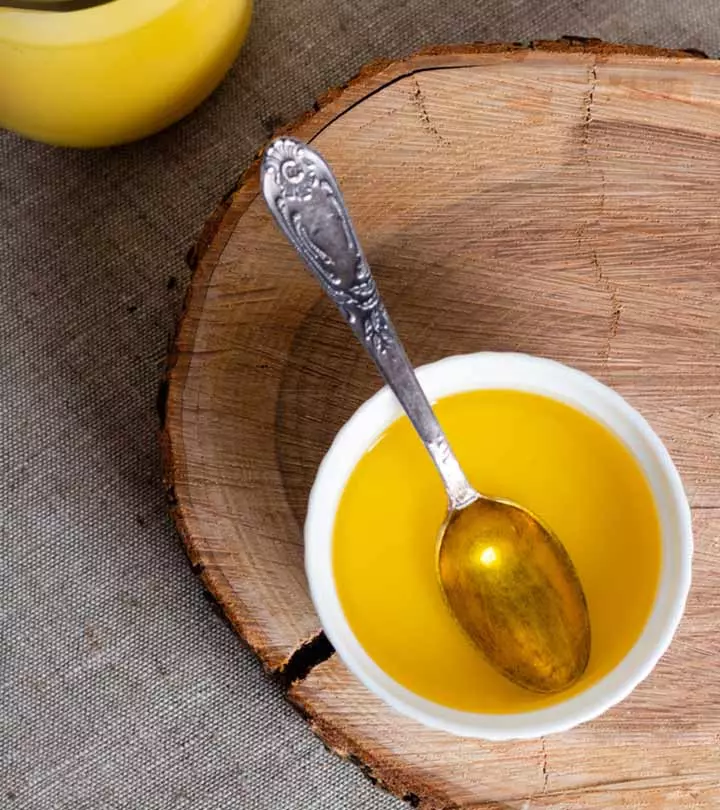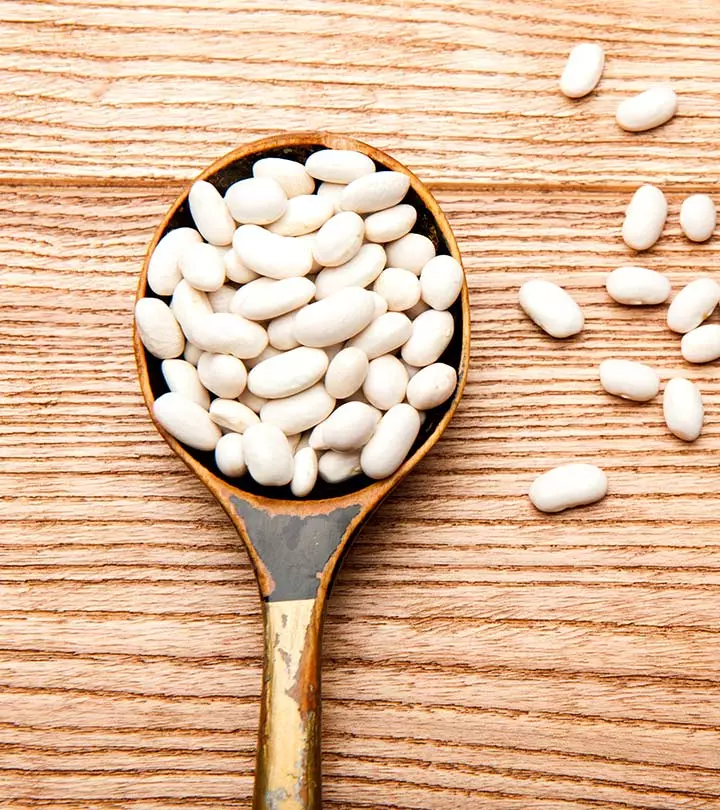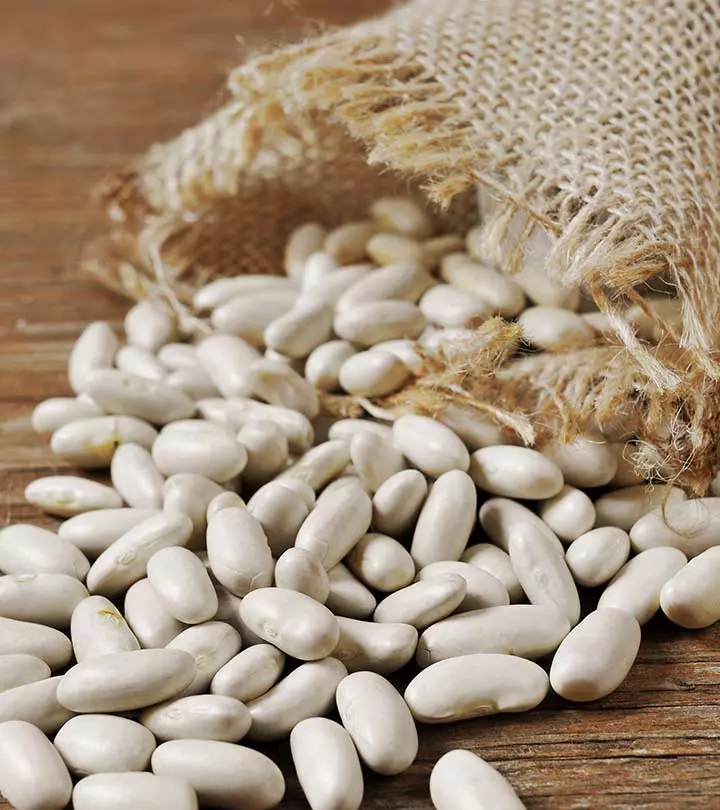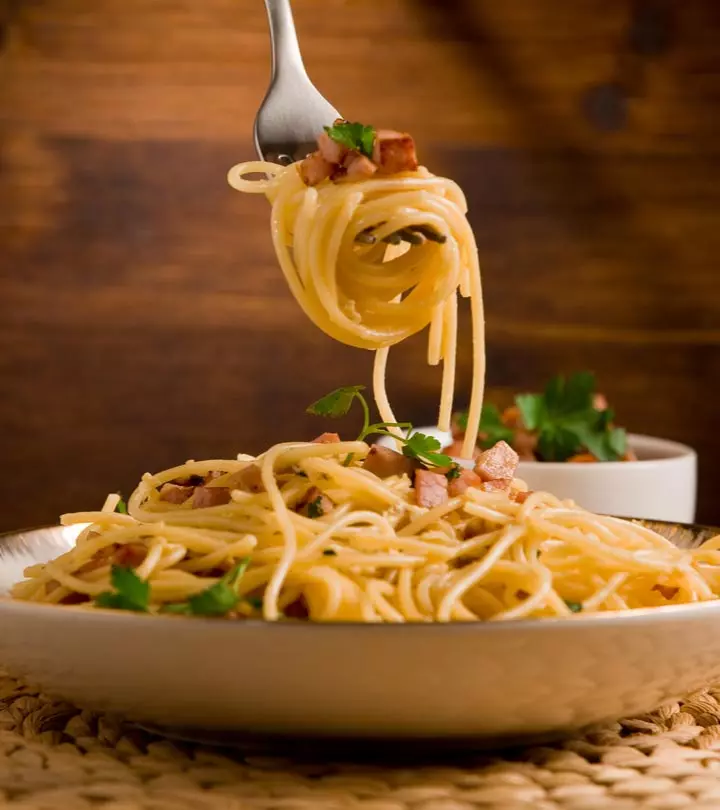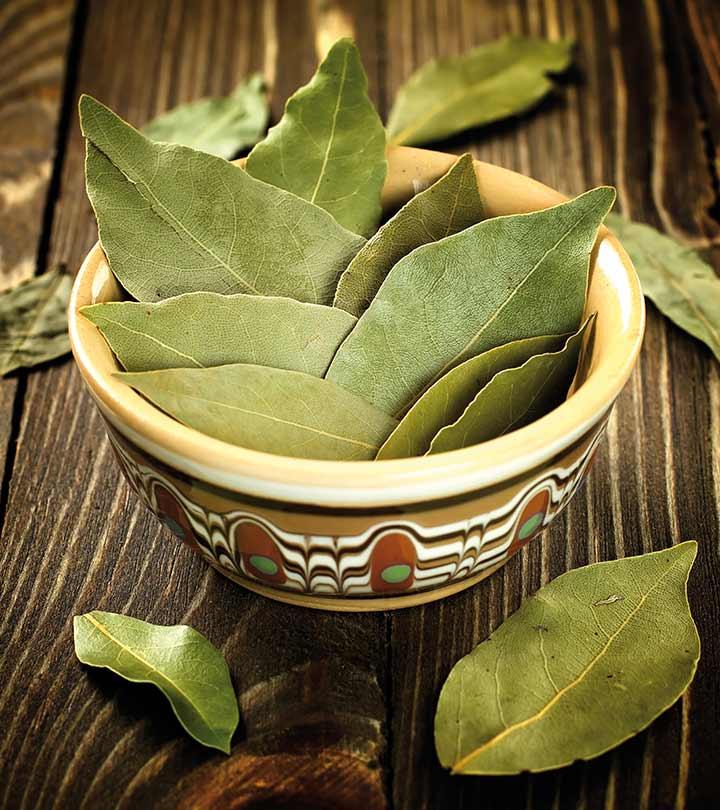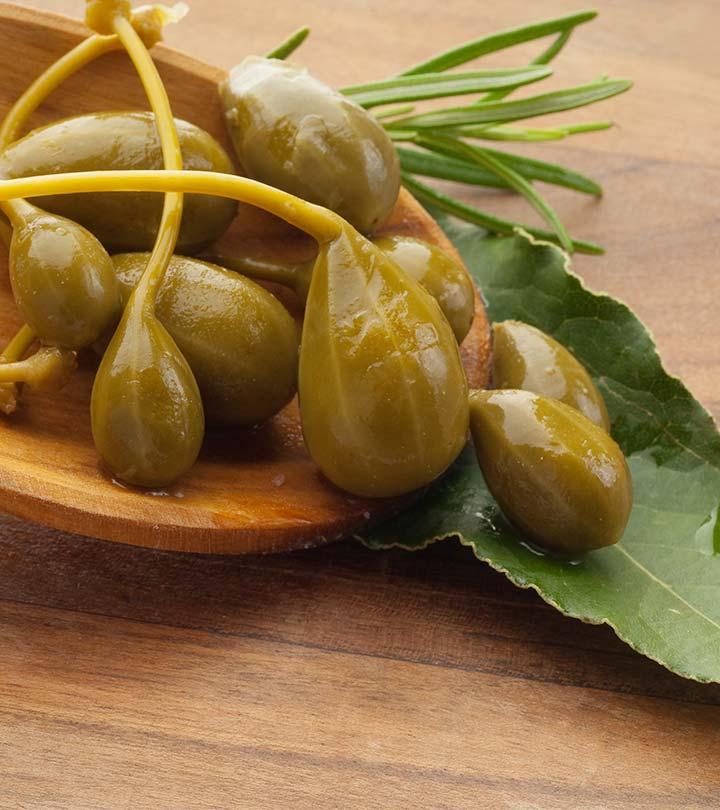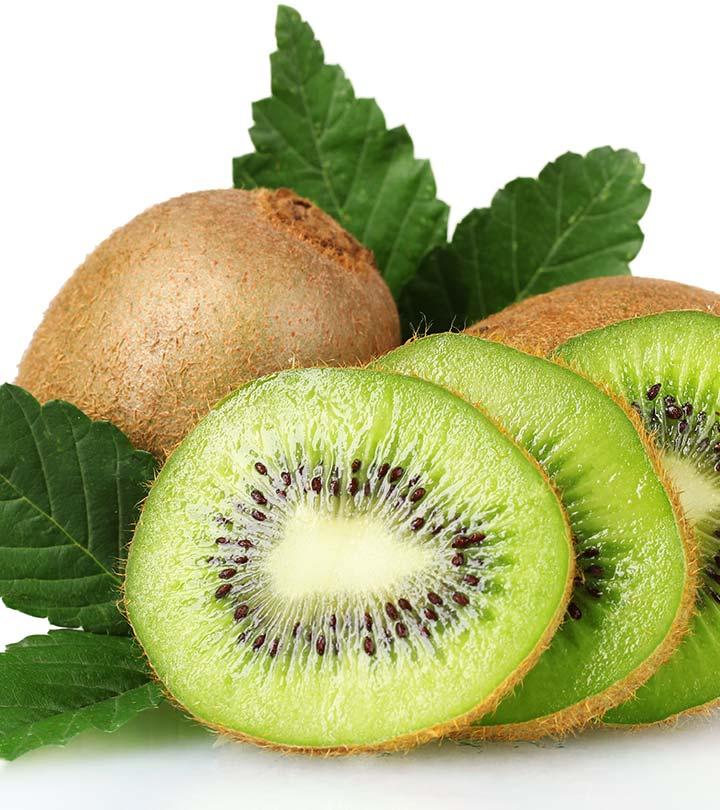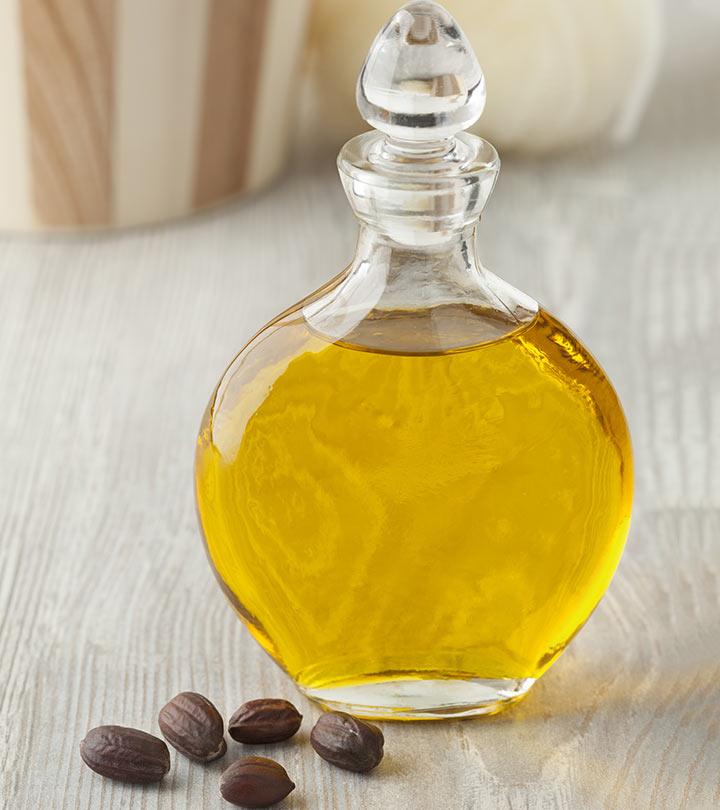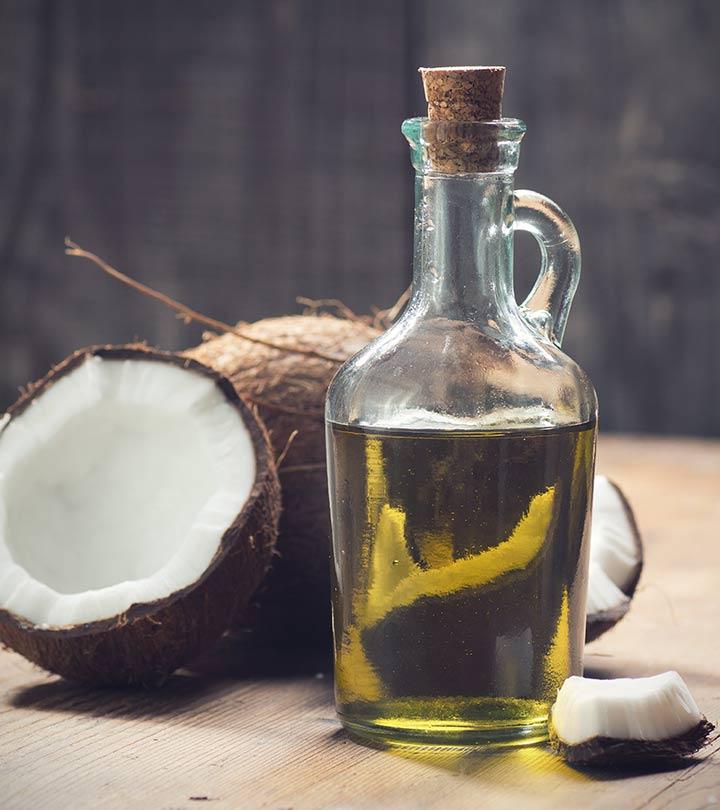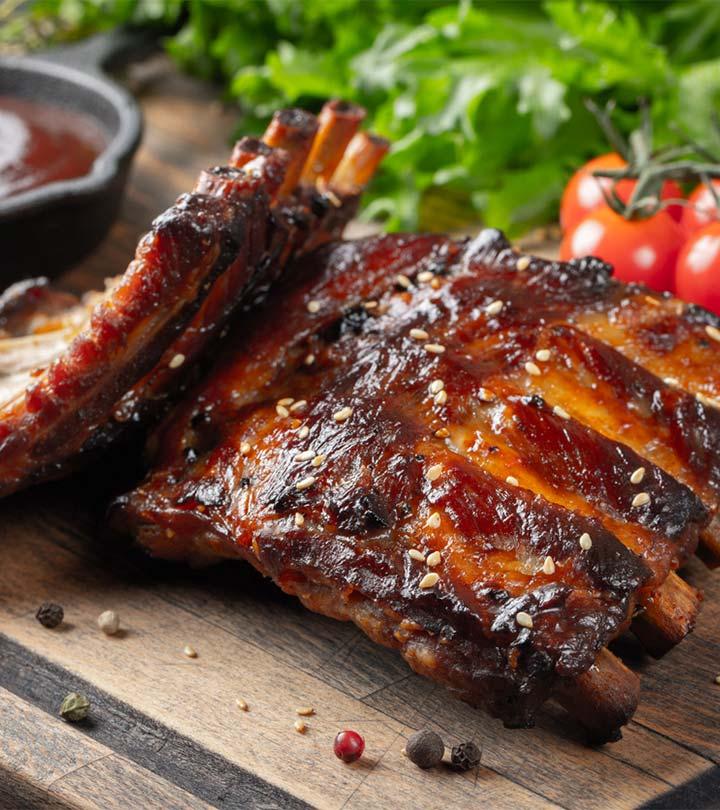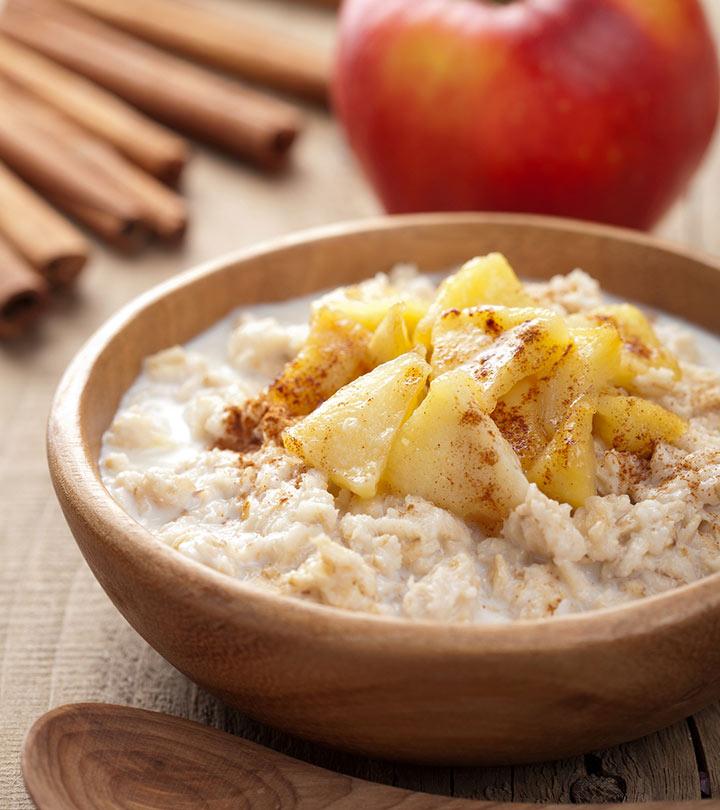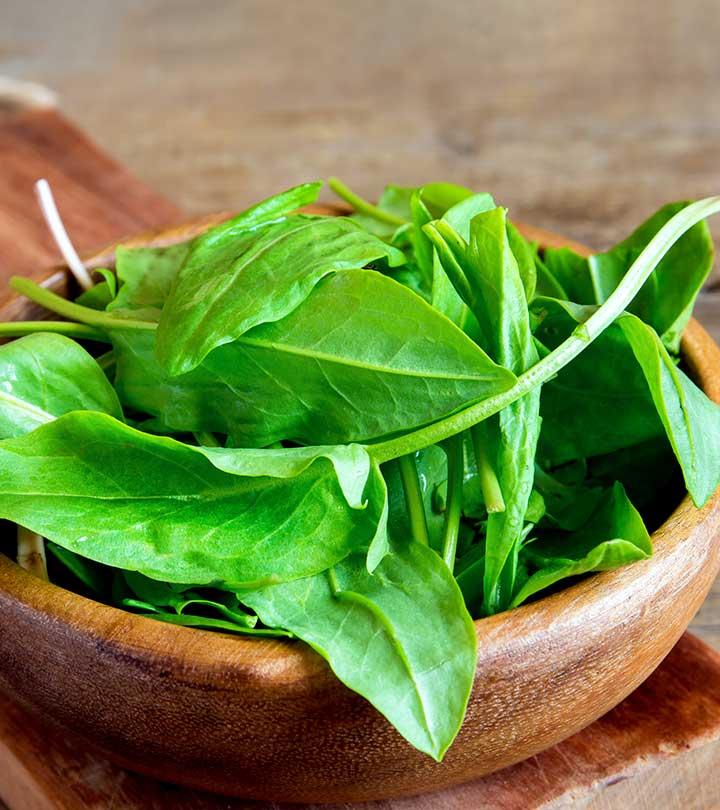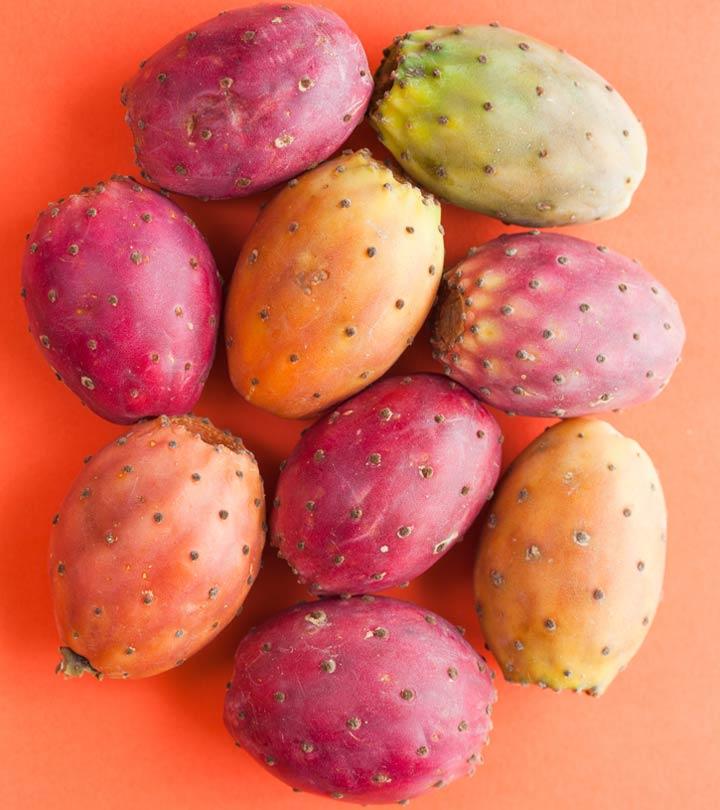Lima Beans Nutrition: Benefits, Preparation, And Risks
Add a dash of fiber and high-quality protein to your diet with these easy-to-make beans.

Image: Shutterstock
The substantial amounts of fiber and protein are responsible for the impressive health benefits of lima beans. They also have been fast becoming popular as they are easy to prepare and inexpensive. These beans also may help promote weight loss, improve heart health and cognitive function, and may regulate blood cholesterol and sugar levels. They make a great addition to a vegetarian or plant-based diet. Here, we discuss the nutrition profile, benefits, and potential risks of lima beans. Read on.
 Know Your Ingredient: Lima Bean
Know Your Ingredient: Lima BeanWhat Is It?
A common legume produced for its edible beans and seeds, especially in South America.
What Are Its Benefits?
It may support digestive health, reduce cholesterol levels, and regulate blood sugar levels.
Who Can Use It?
Considered safe for consumption in general.
How Often?
Regularly.
Caution
Excess consumption may lead to gastrointestinal discomfort. Avoid consuming it if you are allergic to legumes.
In This Article
What Are Lima Beans?
Lima beans (Phaseolus lunatus) are also commonly known as butter beans or sieva beans. They are a legume grown for their edible seeds or beans. They are oval and whitish or green. They have a buttery taste and are among the most common legumes consumed all over the world.
 Trivia
TriviaLima beans are available in different types and cultivars. We briefly discuss them below.
Types Of Lima Beans
Lima beans are available in a diverse array of varieties based on where they grow. Overall, they come in two sizes, small and large, and are further classified into pole and bush types. These beans can adapt to diverse climates. Their rich, buttery taste makes them versatile and a delicious addition to many home gardens across the globe.
Lima beans thrive in the Southern United States and are often referred to as butter beans. The favored cultivars in this region include Nemagreen, Jackson Wonder, Sieva Pole, and Henderson Bush beans. In contrast, the Northern regions are less accommodating to lima bean cultivation. People here typically opt for small-seeded bush varieties like Dixie Butterpea, Thorogreen, and Thaxter.
Are you wondering, “are lima beans good for you?” Find out in the next section.
What Are The Health Benefits Of Lima Beans?
1. May Help With Weight Control
Lima beans are a good source of dietary fiber. They also are a fat-free source of high-quality protein. They increase satiety (short term) and help with weight loss during international energy restriction (1). Thus, substituting them for energy-dense foods may help with weight management.
A review published in the Journal of the Obesity Reviews suggests that consuming legumes can help reduce the risk of obesity-related co-morbidities such as metabolic syndromei Cluster of multiple health disorders that elevate the risk of developing heart disease, insulin resistance, and neurological problems. , diabetes, and cardiovascular disease (2).
However, more research is needed to further understand the role of lima beans in weight loss and weight management.
2. May Improve Digestive Health
Scientific studies have linked the consumption of dietary fiber with the growth of good bacteria in the colon (3).
Dietary fiber is well known for its impact on digestion. It helps bulk up the stool and stimulates peristaltic motioni A succession of involuntary muscular contractions that transport food through the digestive system. and optimizes nutrient uptake.
The high dietary fiber in lima beans can be beneficial for gut health and the digestive system. It can help reduce the risk of acid reflux, ulcers, constipation, diarrhea, and hemorrhoidsi A condition where the rectum and anus veins are swollen and irritated, resulting in pain and bleeding. (4).
3. May Have Cardioprotective Effects
The fiber in lima beans helps lower blood cholesterol levels. They also are a good source of folate. Folate is associated with lower homocysteine levels. Elevated homocysteine is known to increase the risk of coronary heart disease (5).
4. May Help Stabilize Blood Sugar Levels
Scientific studies show that consuming legumes like lima beans can help regulate blood sugar in people with diabetes (6). This could be attributed to their low glycemic index and higher dietary fiber content (6). However, more studies are needed to further understand the role of lima beans in this regard.
 Trivia
TriviaLima Beans Nutrition Facts
One cup of raw lima beans (156g) have the following nutrients (7):
- Calories: 176
- Fat: 1.3g
- Sodium: 12.5mg
- Carbohydrates: 31.5g
- Fiber: 7.6g
- Sugars: 2.3g
- Protein: 10.7g
Lima Beans Preparation And Tips
- Lima beans are usually available frozen, dried, or canned. Pick what suits your requirements.
- You can buy them shelled or unshelled. Fresh lima beans can be stored in the refrigerator for a week. Dried, shelled beans can last up to a year in a cool, dry place.
- Look for whole, uncracked lime beans. Avoid dried or discolored beans.
How to Prepare
Shell lima beans before you cook them by opening each pod and removing the beans. Rinse the beans in a colander before cooking. Add the beans to boiling salt water to cook them fresh. Cook until tender, up to 60 minutes.
The mild buttery taste of these beans pairs well with fish, meat, poultry, or grains. Lima beans can easily be added to soups, salads, casseroles, a bean mash, or a dip recipe. You can also use lima beans in place of other beans, like white beans.
You can also check out the following lima bean recipes.
- Lemon-Garlic Lima Beans
You Will Need
- 1 pound dried lima beans
- 2 bay leaves
- 3 tablespoons extra virgin olive oil, divided
- 1 medium onion, chopped
- 4 garlic cloves, thinly sliced
- 1/4 cup chopped fresh parsley
- 2 tablespoons lemon juice
- 1 tablespoon chopped fresh oregano
- 2 teaspoons grated lemon zest
- 1/2 teaspoon salt
- 1/4 teaspoon pepper
- Additional chopped fresh parsley
Process
- Rinse and sort the beans. Soak according to the package directions. Drain and rinse beans and discard the liquid.
- Place beans in a large saucepan. Add bay leaves and water to cover. Bring to a boil. Reduce heat. Simmer, covered, until beans are tender, for 11/4 to 11/2 hours. Drain.
- Heat 1 tablespoon oil over medium heat in a large skillet. Add onion and cook and stir until tender, for 3-4 minutes. Add garlic and cook for a minute longer. Add the next 6 ingredients. Stir in drained beans and the remaining oil. Toss to combine. Sprinkle with additional parsley.
- Southern Lima Beans
You Will Need
- 1 pound large dried lima beans
- 1 large smoked ham hock
- 9 cups water
- 1 1/2 teaspoons salt
- 1/2 teaspoon black pepper
Process
- Add the beans to a large pot or Dutch oven. Add the ham hock, water, and salt. Bring to a boil, reduce the heat to a low boil, and cook for about 20 minutes.
- Reduce the heat to a simmer, cover tightly, and cook for 1 1/2 to 2 hours or until the beans are tender to your liking.
- Add water to keep the beans just covered. Stir less frequently to allow the beans to stay intact, or stir more often to create a thick, rich broth.
- Add the pepper and additional salt to taste. If desired, remove the hock, shred the meat, and return it to the pot.
- Saucy Lima Beans
You Will Need
- 11/2 cup frozen lima beans
- 1/4 cup chopped onion
- 1 tablespoon butter
- 2/3 cup half-and-half cream
- 11/2 teaspoons minced fresh parsley
- 1/2 teaspoon dill weed
- 1/4 teaspoon salt
- 1/8 teaspoon pepper
Process
- Cook lima beans in a small saucepan according to the package directions. Drain and reserve 1 tablespoon of cooking liquid.
- Sauté onion in butter(in a small skillet).
- Stir in the cream, parsley, dill, salt, pepper, and reserved cooking liquid.
- Cook for 1-2 minutes longer or until the butter is melted.
Including lima beans in your food is quite easy. But you must be aware of their potential adverse effects before you start consuming them.
Lima Beans Health Risks
- May Cause Allergies
Individuals allergic to legumes and peanuts may develop allergic reactions to lima beans. Direct research on allergies to lima beans is lacking. However, legume allergies may trigger mild skin reactions or even life-threatening anaphylactic reactionsi Potentially fatal allergic reaction that develops seconds or minutes after allergen exposure and causes difficulty breathing or shock – and have been reported in people exposed to legumes and peanuts (8).
- Has A Risk Of Cyanide Poisoning
Lima beans contain cyanogenic glycosides that can be hydrolyzed into the highly toxic hydrogen cyanide(9). Though this is rare, it is better to be cautious while consuming large amounts of raw lima beans.
- May Cause Gastrointestinal Discomfort
Lima beans contain oligosaccharides that can cause flatulence (9). Do consult a doctor if you experience nausea, vomiting, stomach cramps, or diarrhea after consuming lima beans.
- May Reduce The Absorption Of Certain Nutrients
Lima beans contain compounds (called anti-nutrients, like lectins and tannins) that may interfere with the absorption of nutrients (10), (11). However, rinsing, cooking, and toasting the beans may help reduce the concentrations of these antinutrients. People with malnutrition or anemia should consult a nutritionist before consuming lima beans.
Infographic: All You Need To Know About Lima Beans
Lima beans are full of nutrients and fiber that yield amazing health benefits. However, too much of anything can be harmful for your health. Check out the infographic below to learn about the benefits and side effects of lima beans. Illustration: StyleCraze Design Team
Lima beans are nutritious legumes featured in many savory dishes. They are loaded with proteins, dietary fiber, vitamins, and minerals. The benefits of lima beans range from promoting digestive health to possibly lowering blood cholesterol levels. Their rich dietary fiber content may help promote heart health, thus reducing the risk of many chronic cardiovascular diseases. The high fiber content of lima beans may also result in weight loss since it induces the feeling of fullness after eating. However, when consumed in excess, it can cause digestive issues such as cramps, nausea, diarrhea, or malabsorption of nutrients. It may also trigger allergies. You should limit its use and consult a doctor if any adverse reactions occur.
Frequently Asked Questions
Are lima beans good for hair?
Anecdotal evidence suggests that lima beans help promote hair growth. However, limited research is available to prove these claims.
Are lima beans anti-inflammatory?
Yes. Lima beans, which are also known as dried beans, are rich in antioxidants that may act against inflammation and free radical damage (12).
Are lima beans good for your kidneys?
Yes. The presence of plant protein in lima beans helps reduce the risk of kidney disease (13). However, more studies are warranted to prove these claims.
Are lima beans high in potassium?
Yes. Lima beans are rich in potassium. One cup of raw lima beans contains 729 mg of potassium (7).
Key Takeaways
- Rich in dietary fiber and proteins, lima beans are highly nutritious with several health benefits as well.
- These are not only good for weight loss, but also help improve your heart and digestive health as well.
- Soaking and rinsing the beans before cooking would help get the most of its nutrients.

Image: Stable Diffusion/StyleCraze Design Team
Learn about the amazing nutrition and health benefits of lima beans. Watch this video to discover how this superfood can help you stay healthy and fit.
Reference code
References
Articles on StyleCraze are backed by verified information from peer-reviewed and academic research papers, reputed organizations, research institutions, and medical associations to ensure accuracy and relevance. Read our editorial policy to learn more.
- Pulse Consumption, Satiety, and Weight Management1
https://www.ncbi.nlm.nih.gov/pmc/articles/PMC3042778/ - A review of the nutritional value of legumes and their effects on obesity and its related co-morbidities
https://onlinelibrary.wiley.com/doi/abs/10.1111/obr.12144 - Fiber-Mediated Nourishment of Gut Microbiota Protects against Diet-Induced Obesity by Restoring IL-22-Mediated Colonic Health
https://www.cell.com/cell-host-microbe/fulltext/S1931-3128(17)30497-3?_returnURL=https%3A%2F%2Flinkinghub.elsevier.com%2Fretrieve%2Fpii%2FS1931312817304973%3Fshowall%3Dtrue - Health benefits of dietary fiber
https://academic.oup.com/nutritionreviews/article/67/4/188/1901012?login=true - Role of homocysteine in the development of cardiovascular disease
https://www.ncbi.nlm.nih.gov/labs/pmc/articles/PMC4326479/ - Effect of non-oil-seed pulses on glycaemic control: a systematic review and meta-analysis of randomised controlled experimental trials in people with and without diabetes
https://link.springer.com/article/10.1007/s00125-009-1395-7 - FoodData Central : Lima Beans
https://fdc.nal.usda.gov/fdc-app.html#/food-details/168396/nutrients - A Comprehensive Review of Legume Allergy
https://pubmed.ncbi.nlm.nih.gov/22555630/ - Lima Bean (Phaseolus Lunatus L.) – A Health Perspective
http://www.ijstr.org/final-print/feb2020/Lima-Bean-phaseolus-Lunatus-L-A-Health-Perspective.pdf - Effect of processing on the nutrients and anti-nutrients of lima bean (Phaseolus lunatus L.) flour
https://onlinelibrary.wiley.com/doi/10.1002/1521-3803(20010401)45:2%3C94::AID-FOOD94%3E3.0.CO;2-E - Is There Such a Thing as “Anti-Nutrients”? A Narrative Review of Perceived Problematic Plant Compounds
https://www.ncbi.nlm.nih.gov/pmc/articles/PMC7600777/ - Nutritional and health benefits of dried beans
https://pubmed.ncbi.nlm.nih.gov/24871476/ - Proximate analysis of thirteen (13) lima bean (phaseolus lunatus) accessions in Ethiopia
https://www.researchgate.net/publication/353807256_ISABB_Journal_of_Food_and_Agricultural_Sciences_Proximate_analysis_of_thirteen_13_lima_bean_phaseolus_lunatus_accessions_in_Ethiopia
Read full bio of Gabrielle Kane
Read full bio of Ravi Teja Tadimalla
Read full bio of Moksha Gandhi










